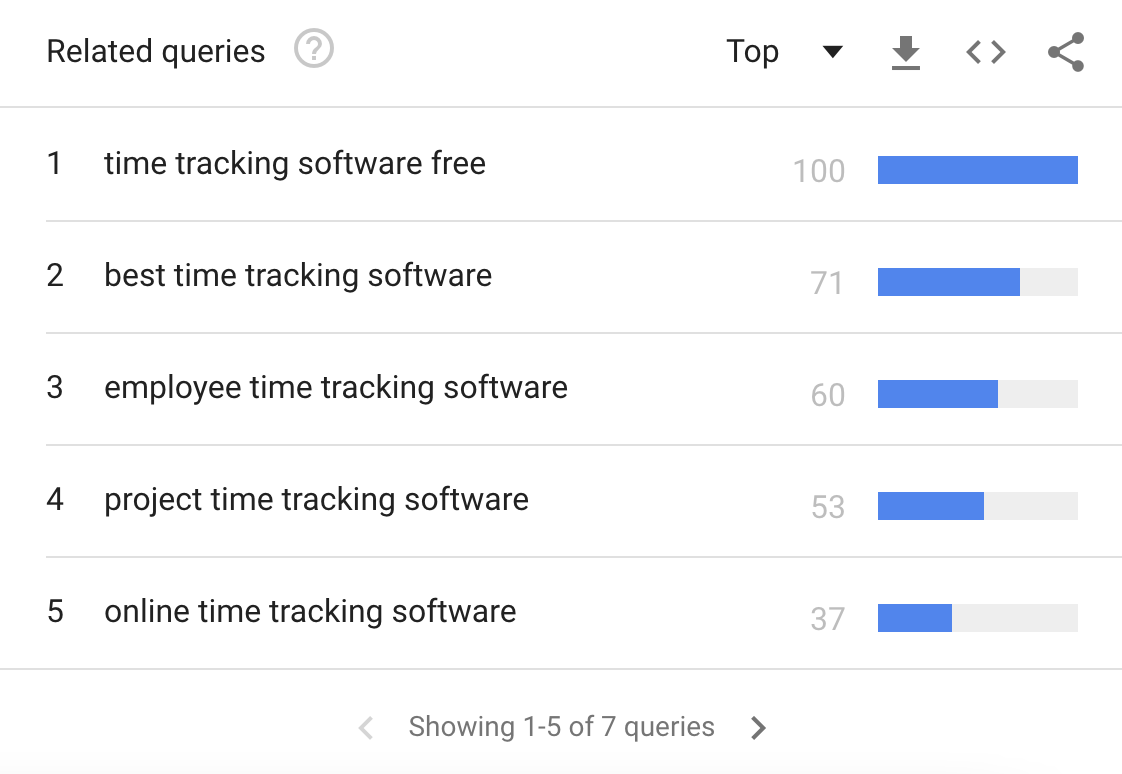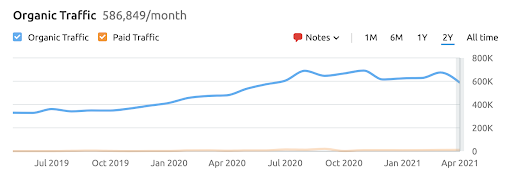Nine times out of ten, B2B companies reach out to our agency because they need help generating new sales leads. It seems like a simple enough problem, but with the number of channels available to you it may not be obvious where to start when you build your marketing program. We’ve put together this information as a guide to help you consider your own approach.
When we set out to explore a new marketing partnership, the most critical decision we make that determines the outcome of that program is where we should invest resources. In other words, what tactics do we prioritize in the first 90-120 days to drive maximum value and set the table for future success?
There are a couple initial questions that help steer us in the right direction:
Is there a clear reason why aren’t you getting more leads already?
Are potential customers already searching for the solutions you offer? If so, how many and how often?
The answers to these questions should help inform how you define the marketing objective(s) for your program. In order to prioritize the tactics we employ, we need to ensure they directly address the business problem we’re solving for.
Demand Generation vs. Lead Generation
When we execute digital marketing strategies for our B2B clients, there are two large categories that we often use to define the work that we do:
Demand generation is a marketing strategy that’s focused on creating awareness around your brand, product, and the problems that you solve. It’s about building long-term relationships with your audience, and positioning your brand and solution as the clear choice.
Lead generation is focused on driving immediate impact on your sales pipeline by capturing existing demand, and funneling high intent prospects into the buying cycle.
Both of these approaches are important in creating a healthy marketing program for your B2B sales organization, but as you’re just getting started, it’s important to focus your efforts in the place that will have the most impact on your bottom line.
Before you start investing time and money into marketing, it’s important to have a clear idea of the level of existing demand for your product or service, and whether or not you’re building a lead gen engine to capture that demand or if you need to first focus your time on building demand.
What’s the difference?
The questions that help determine where we start are pretty simple. Do people already know they need your product? Does your target audience already have a clear idea of the value that your product or service provides? Are people actively shopping for similar solutions today? If that’s the case it makes sense to start by building out and optimizing your search channels as soon as possible. This will make you visible to high intent audiences who are in-market today for your product or service. When done right, this is the fastest way to see immediate sales impact from your marketing dollars.
If your offering is newer, highly innovative, and not well understood in the marketplace, building out your intent channels first may be a misstep. Ask yourself, “is someone searching for solutions that my product or service solves for already?”. If the more likely answer is no, invest your time and energy in generating awareness of the problem you are addressing, and creating new demand around your value proposition. It’s no small task, but being first to market with a message about the value your business provides positions you as the only answer to your customer’s newly identified wants or needs. You really have a chance to own the space, and control the story. Once your demand gen program is in place and people begin to self-identify their needs, building a lead gen program will accelerate your pipeline and create real opportunities out of that demand.
How To Identify Existing Demand
This all seems like common sense so far, and if you’re in a mature industry, chances are you can make this decision intuitively. If you’re unsure of the best place to start however, there are a few quick ways you can assess your existing demand using some basic digital marketing tools.
Intent-based (read: search) ad formats like Google Ads have tools that can help us forecast things like search volume to indicate that there is existing demand for your product or service.

As an example, building a simple keyword plan in Google Ads allows us to see that there are high volume of monthly searches on shopping oriented queries for time tracking software products. These tools are widely used, well understood, and the person shopping for this solution may have even used your product or a competitor’s product in the past. There may be a lot of competition in that search ad environment, but that doesn’t mean there isn’t opportunity to capitalize.
Additionally, free research tools like Google Trends can help us determine general interest in a given topic. Google bases it’s interest scores on absolute search volume for a term, relative to the total number of searches received during that same time period.
Example A: Mature Market
For the search “time tracking software” we can see a relatively stable interest over time since 2016.

Google trends will even offer up some “related queries” that can be helpful as you start thinking about a paid search strategy, and what keyword modifiers might be important to consider in your search ads.

If you are aware of competitors in your space, use a tool like SEMRush to identify what searches are generating traffic for their site and how high intent those searches are. Chances are, if your competitors are generating traffic from paid and organic search, there is space for you to capture existing demand with intent based search marketing before setting your demand gen program in motion.
 In the above example we can see that a well established company in the time tracking space is generating 600K+ monthly site visitors via organic search. If we dig in further, we can see that over 85% of that traffic is coming from non-brand searches.
In the above example we can see that a well established company in the time tracking space is generating 600K+ monthly site visitors via organic search. If we dig in further, we can see that over 85% of that traffic is coming from non-brand searches.

This indicates that there are many well known business challenges related to time tracking that companies in the space can leverage to optimize their site to provide valuable information for their audience. While this search behavior doesn’t always express an explicit buying intent, it does express an interest in time management and tracking in general, and captures searchers who are asking questions related to your solution, and are likely product aware. (Albeit, SEO strategies often blur the line between demand gen and lead gen)
Example B: New Market / Innovative Solution
On the flip side, let’s consider a new and highly innovative product. Sticking with our theme of time tracking and productivity software, let’s say your company makes a tool that tracks the time your team spends procrastinating.

As evidenced by the Google Trends data above, the search term ‘procrastination tracking software’ doesn’t get enough searches to recognize a measurable amount of volume. If this fictional procrastination tracking company were real (which would be really cool), they’d have an exciting and significant demand gen challenge ahead of them.
For our procrastination tracking company, it’s time to get to work producing informational content, and leveraging social channels to build a community around their brand. At a high level, by posing and answering questions like “how much time is your team losing to procrastination?”, this company can expose the evils of procrastination to the corporate world. Being the first to market with a message like that gives this company control over the narrative of the entire space, and a lot of power as imitators emerge.
Conclusion
Sifting through the vast number of digital marketing options available to you can feel overwhelming when you are starting out and don’t yet have a track record of results. Giving yourself a framework for decision making in regards to your initial strategy will pay huge dividends and inform how you adjust to actual measured performance. There’s always a degree of risk when you launch a marketing campaign for a new product or service, but using some simple tools to do research in advance will mitigate the potential for wasted time, energy and ad dollars.